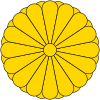Yakisugi

Traditional houses in Naoshima, Kagawa clad with yakisugi panels

Close-up view of charred yakisugi board

Yakisugi treated wood used in a box for sunglasses
Yakisugi (焼杉) is a traditional Japanese method of wood preservation. Yaki means to heat with fire, and sugi is cypress.[1][2] It is referred to in the West as burnt timber cladding and also known as shou sugi ban (焼杉板) which uses the same kanji characters but an incorrect pronunciation. The ban character means "plank".
By slightly charring the surface of the wood without combusting the whole piece, the wood becomes water-proof through the carbonisation and is thus more durable.[3][4] It also protects against insects, as well as making the wood fire retardant.[5]
Examples[]
Contemporary architect Terunobu Fujimori works with yakisugi.[6][7]
References[]
- ^ Fortini, Amanda (19 September 2017). "The Latest Design Trend: Black and Burned Wood". The New York Times.
- ^ MacDonald, Deanna (9 February 2016). Eco Living Japan: Sustainable Ideas for Living Green. Tuttle Publishing. ISBN 978-1-4629-1845-4.
- ^ "Use This Incredible Technique to Waterproof Wood Furniture". Architectural Digest. 3 November 2017.
- ^ Mehta, Geeta; MacDonald, Deanna (9 July 2012). New Japan Architecture: Recent Works by the World's Leading Architects. Tuttle Publishing. ISBN 978-1-4629-0850-9.
- ^ Steele, James (16 March 2017). "Contemporary Japanese Architecture: Tracing the Next Generation". Routledge.
- ^ "Yakisugi House by Terunobu Fujimori", Megan Wilton, Dezeen, 11 March 2009, Photograph: Edmund Sumner.
- ^ "Interiors: A Japanese charred-timber house inspired by a cave dwelling", Yuki Sumner, The Telegraph, 28 August 2009
External links[]
 Media related to Yakisugi at Wikimedia Commons
Media related to Yakisugi at Wikimedia Commons
Categories:
- Housing in Japan
- Woodworking
- Japan culture stubs
